When selling a property, the results of a building inspections impact its market value and final selling price. Building inspections provide a comprehensive assessment of a property’s condition, highlighting everything from structural issues and safety concerns to minor repairs and maintenance needs. Buyers often rely on these reports to decide if a property is worth the asking price, while sellers can use inspections to negotiate and address issues that could enhance the property’s value.
In this post, we’ll explore how building inspections can affect a property’s value, how sellers can use inspections to their advantage, and the steps buyers can take to understand how inspection results may building inspections impact their investment.
Revealing Structural and Safety Issues
One of the most significant ways building inspections impact property value is through the discovery of structural or safety issues. Problems like foundation cracks, water damage, roof deterioration, or faulty wiring can reduce a property’s value if left unresolved. These issues represent added costs for potential buyers, who may adjust their offers to cover anticipated repairs or even decide to walk away from the purchase altogether.
Example: If an inspection reveals foundation issues, buyers may negotiate for a lower price to account for the costly repairs, which can significantly reduce the property’s overall market value.
Key Takeaway: Major structural or safety issues discovered during an inspection often result in reduced offers or require repairs to maintain the property’s value.
Influencing Buyer Confidence and Perception
A clean inspection report, free of major issues, can boost buyer confidence and positively influence their perception of the property’s value. On the other hand, an inspection report filled with repair recommendations can deter buyers, who may perceive the property as requiring more investment than it’s worth. Properties in better condition typically attract more offers, making it easier for sellers to justify a higher price.
Key Takeaway: A positive building inspection report can make the property more appealing, enhancing perceived value and potentially increasing the final sale price.
Providing Leverage for Price Negotiation
Building inspection findings give buyers leverage to negotiate a lower purchase price. For example, if a report shows the need for a new roof or plumbing repairs, buyers may use this as justification for offering less than the asking price. Sellers should be prepared to negotiate if significant issues are identified, especially if the market is competitive and the buyer has multiple options.
Example: A buyer may request a $5,000 reduction in price if the inspection reveals the HVAC system is nearing the end of its lifespan, knowing that they’ll likely need to replace it soon.
Key Takeaway: Sellers should anticipate buyer negotiations based on inspection findings and be ready to adjust the price if substantial repairs are needed.
Encouraging Pre-Listing Repairs and Upgrades
Pre-listing building inspections are becoming a popular strategy among sellers. By conducting an inspection before listing, sellers can address any issues that might reduce the property’s value and make improvements to boost its appeal. Repairs to visible or known issues, such as leaky faucets, damaged siding, or outdated fixtures, can increase the property’s perceived value, making it more competitive in the market.
Key Takeaway: Conducting a pre-listing inspection allows sellers to proactively handle repairs, increasing the property’s market value and helping it stand out among similar listings.
Affecting the Property’s Market Positioning
Properties in excellent condition typically command a higher price, while those with numerous repair needs may sit on the market longer and require price reductions. By completing repairs based on inspection findings, sellers can reposition their property in a higher price bracket or attract more buyers in a competitive market.
Example: A property with a newly repaired roof, updated wiring, and fresh paint can attract higher offers compared to a similar property with unresolved issues, positioning it as a “move-in ready” option for buyers.
Key Takeaway: Addressing inspection issues can help sellers position their property at a premium level, appealing to buyers looking for turnkey homes.
Expediting the Sale Process
Properties with positive inspection results typically sell faster, as buyers feel more confident proceeding without the need for additional evaluations or contingencies. When sellers address inspection-related repairs before listing, it reduces the likelihood of prolonged negotiations or requests for repair credits, making the sale process smoother and quicker.
Key Takeaway: A well-maintained property with a clean inspection report can expedite the selling process, reducing time on the market and potentially yielding a quicker close.
Supporting Home Appraisal Values
If an inspection reveals substantial repairs, it can lower the home’s appraised value, which is essential for buyers relying on financing. Appraisers consider both the market and condition of the property, and a negative inspection report can reduce the appraisal, potentially causing issues with financing. For sellers, a strong building inspection report supports a higher appraisal, aligning with a desirable sale price.
Key Takeaway: A favorable inspection helps secure a higher appraised value, supporting the sale price and reducing complications with buyer financing.
Protecting Sellers from Future Liability
While sellers are often legally required to disclose known issues, a pre-listing inspection provides documentation of the property’s condition, helping protect them from liability if issues arise post-sale. By addressing inspection findings and maintaining transparency with buyers, sellers reduce the risk of disputes or claims that could lead to post-sale negotiations or legal action.
Key Takeaway: A pre-listing inspection and proper disclosure protect sellers, allowing for a transparent transaction and reducing potential liability for undisclosed issues.
Conclusion
Building inspections are a critical component of the real estate process, influencing property value, selling price, and the negotiation dynamic between buyers and sellers. For sellers, addressing inspection findings before listing a property can increase its value and attract more buyers. For buyers, understanding the inspection report enables informed decisions and provides leverage for fair pricing. In a competitive real estate market, leveraging inspection insights can make a significant difference in securing the best possible outcome for both parties.

